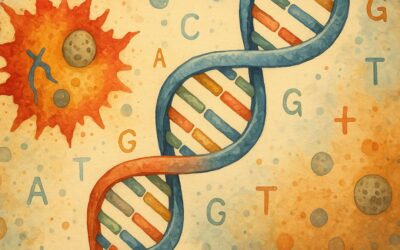Imagine a world where medical treatments are precisely targeted to individual cells, where electronics are faster and more efficient than ever before, and where everyday products are enhanced at the molecular level for greater performance and durability. Welcome to the world of nanotechnology, a field of science that operates on a scale so small, it’s almost beyond our imagination. Let’s embark on a journey to explore nanotechnology, understand its importance, and see how it’s transforming our lives.
What is Nanotechnology?
The Basics
Nanotechnology involves manipulating matter at the nanoscale, typically between 1 and 100 nanometers. To put that into perspective, a nanometer is one-billionth of a meter. This scale is so tiny that it’s hard to visualize, but consider this: a single human hair is about 80,000 to 100,000 nanometers wide. Nanotechnology works with particles and structures that are thousands of times smaller than a human hair.
How It Works
At the nanoscale, materials exhibit unique properties that are different from their larger-scale counterparts. These properties can include increased strength, lighter weight, enhanced chemical reactivity, and improved electrical conductivity. By exploiting these properties, scientists and engineers can create new materials and devices with revolutionary capabilities.
Real-Life Applications of Nanotechnology
Medicine
Nanotechnology is revolutionizing the field of medicine in ways that were once the stuff of science fiction. Imagine a world where:
- Targeted Drug Delivery: Tiny nanoparticles deliver drugs directly to diseased cells, minimizing side effects and improving treatment effectiveness. For instance, cancer treatments can be tailored to attack only cancer cells, sparing healthy tissues.
- Diagnostics: Nanosensors detect diseases at their earliest stages, allowing for prompt and more effective treatment. These sensors can identify biomarkers in blood samples, offering quick and accurate diagnoses.
- Regenerative Medicine: Nanomaterials help repair and regenerate damaged tissues and organs. For example, nanofibers can be used to create scaffolds that support the growth of new tissues, potentially revolutionizing organ transplants.
Electronics
Nanotechnology is at the heart of the electronics revolution, enabling:
- Smaller and Faster Devices: Nanotechnology allows for the creation of smaller, more powerful, and more efficient electronic components. This is why our smartphones and computers keep getting faster and more capable.
- Improved Displays: Quantum dots, tiny semiconductor particles, enhance the color and brightness of screens. This technology is already being used in the latest generation of high-definition televisions.
- Energy Efficiency: Nanomaterials improve the performance of batteries and solar cells, leading to longer-lasting batteries and more efficient solar panels.
Everyday Products
Nanotechnology is also enhancing many products we use daily:
- Stronger Materials: Nanocomposites are used to make materials that are stronger yet lighter. This can be seen in sports equipment like tennis rackets and bicycles, which benefit from enhanced performance and durability.
- Improved Textiles: Nanotechnology is used to create stain-resistant, water-repellent, and anti-bacterial fabrics. This makes our clothes more durable and easier to care for.
- Cosmetics and Sunscreens: Nanoparticles in cosmetics and sunscreens improve their effectiveness and feel. For example, zinc oxide nanoparticles provide better UV protection without leaving a white residue.
The Importance of Understanding Nanotechnology
Relating to Real Life
Understanding nanotechnology helps us appreciate the advancements that impact our daily lives. From the medicine that keeps us healthy to the gadgets we rely on, nanotechnology plays a crucial role. It’s not just about tiny particles; it’s about the big changes they bring to our world.
The Future Impact
Nanotechnology holds immense potential for the future. It promises to address some of the most pressing challenges, including:
- Sustainable Energy: Developing more efficient solar cells and batteries.
- Environmental Protection: Creating materials that can clean up pollutants and reduce waste.
- Advanced Healthcare: Innovating treatments for diseases that currently have no cure.
Taking Action
Now that you understand the significance of nanotechnology, think about how it can inspire you to engage with science in your daily life. Here’s how you can take action:
- Stay Informed: Keep up with the latest advancements in nanotechnology. Read articles, watch documentaries, and follow reputable science news sources.
- Support STEM Education: Encourage and support science, technology, engineering, and mathematics (STEM) education in your community. Inspire the next generation of scientists and engineers.
- Advocate for Responsible Use: Promote the responsible and ethical use of nanotechnology. Advocate for regulations that ensure safety and environmental protection.
Nanotechnology is more than just a fascinating scientific field; it’s a transformative force that’s shaping our future. By understanding and appreciating this tiny science, you can gain a greater insight into the innovations that are enhancing our lives. Embrace the possibilities of nanotechnology and consider how you can contribute to its responsible development. Together, we can harness the power of the very small to achieve the very great.
Take a moment to reflect on the incredible advancements driven by nanotechnology. How can you apply this understanding in your own life or community? Whether it’s through education, advocacy, or simply staying informed, you have the power to make a difference. Let’s work together to unlock the potential of nanotechnology and create a brighter, more innovative future.











0 Comments